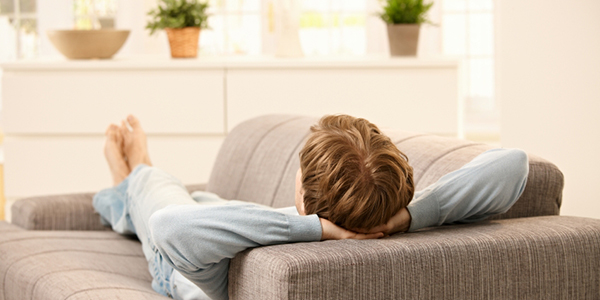These resources are from an archived version of our website. Want to see what we’ve been up to lately? Check out our new website.
The Comfort of a Passive Home
Comfort can be subjective, but undefinable? Not at all. Plenty of research is available on the factors of human comfort: conditions which, when present, universally put us at ease and add to our well being.
At Clarum, comfort is crucial. It’s another reason we love passive design. Passive homes achieve comfort without even trying, because the objective conditions of human comfort are simply a natural side-effect of passive building strategy.
General Comfort Factors
Comfort starts with fresh air, abundant natural daylight, good sound quality and protection from noise. When these are present, people feel alert, calm and cheerful. A badly lit room, continual noise, stuffy air – in a place like that, every breath, sound and sight is a reminder that you’re uncomfortable.
When these are present, people feel alert, calm and cheerful. A badly lit room, continual noise, stuffy air – in a place like that, every breath, sound and sight is a reminder that you’re uncomfortable.
At Clarum, we believe your home should make you feel good. General comfort is important.
Thermal Comfort Factors
Then there’s thermal comfort. The Danish scientist P. O. Fanger boiled this down to a handful of measurable criteria. (Source) There’s a lot of math behind Fanger’s conclusions, but for now let’s just summarize the concepts. (Source)
- Temperature constancy. Your house should be about the same temperature from one room to another.
- Turbulence. Air flow should be mild, not drafty.
- Humidity. No one likes it muggy.

Comfort and Passive Design
Any home can achieve comfort. It’s a question of cost (financial, environmental, otherwise).
But passive homes do it without even trying. In other words, comfort is a direct result of the building strategies that define passive design.
For example, our passive homes meet all of Fanger’s comfort criteria, as well as the general factors above, on less energy consumption, a reduced environmental impact and a much smaller power bill.
Let’s take a closer look:
How our Strategies Create Comfort
- Super-insulation. Roof, walls, windows, foundations: our super-insulated building envelope provides acoustic privacy and prevents drafty convection currents.
- Airtight house. This keeps the drafts out, ensuring a constant, pleasant airflow.
- Mechanical ventilation. Our homes are designed to continually introduce fresh air to your living space, while piping stale air out and also controlling humidity.
- Heat recovery. Before removing old air, we transfer its heat to the new, so the temperature inside your house remains stable from room to room.
- Solar gain. With lots of south-facing windows and calculated shading, Clarum homes brim with abundant, natural daylight – without glares or overheating.
In short, comfort is right at the core of passive design. It’s not an afterthought. It’s actually built into the definition.
When you think “comfort,” think passive homes. Think Clarum Homes. Call 650.322.7069 for more information.









[…] Creating a building that only uses passive design strategies to create an ideal comfort level is almost impossible today. There are different climate zones that require using different strategies to create such conditions indoor. For the cold and dry climate we can increase the comfort level by almost 40% using high thermal mass night flushed, natural ventilation cooling , internal heat gain, passive solar direct gain low mass, and passive solar direct gain high mass (Climate consultant 5.4). For the hot and humid climate, a way to increase the comfort level through passive ways can over 50% through natural ventilation cooling of the building, the internal heat gain, and passive solar direct gain high mass (Climate consultant 5.4). Such ways cut the energy use by almost a half. If used with solar panels and other ways of renewable energy such designs dominate the simple ways of engineering like super-insulation, mechanical ventilation, airtight house, heat recovery and increasing the performance of air conditioning and heat (http://clarum.com/custom-homes/the-comfort-of-a-passive-home/). […]